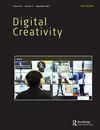从概念到空间:aigc相关属性翻译的新视角
IF 2.7
4区 艺术学
0 ART
引用次数: 0
摘要
从现象属性中汲取灵感并将其转化为启发式模型工具是推动建筑形式创新的有效手段之一。然而,过度依赖感知表明决策风险更大。如今,人工智能生成内容(AI-generated Content, AIGC)技术结合了信息全面性和建模效率的优势,为建筑属性的翻译提供了新的可能性。在属性研究的基础上,提出了一种利用生成式对抗网络(VQGAN + CLIP)实现抽象概念的可视化,然后通过关键帧风格转移技术增加多维影响的空间翻译新方法。以折衷属性为例,进行了二维和虚拟三维翻译可行性实验。本文旨在从建筑师的角度出发,通过一个技术组织来提高空间翻译的科学性和影响力。在提供创新、民主、高效的辅助设计工具的同时,也为aigc参与的预设计提供了一个新的视角。本文章由计算机程序翻译,如有差异,请以英文原文为准。
From concept to space: a new perspective on AIGC-involved attribute translation
ABSTRACT Drawn inspiration from phenomenal attributes and translating them into heuristic model tools is one of the effective means to promote architectural form innovation. However, over-reliance on perception indicates greater risks in decision-making. Nowadays, AI-generated Content (AIGC) technology combines the advantages of information comprehensiveness and modelling efficiency, providing new possibilities for the translation of architectural attributes. Based on attribute study, this paper proposes a new approach to spatial translation that uses the Generative Adversarial Network (VQGAN + CLIP) to realize the visualization of abstract concepts and then adds multi-dimensional influence through the Keyframe Style Transfer technology. The eclectic attribute is used as an example for the 2D and virtual 3D translation feasibility experiments. The article aims to improve the scientificity and influence of spatial translation through a technical organization from the perspective of architects. While providing an innovative, democratic and efficient aided-design tool also highlights a new angle for AIGC-involved pre-design.
求助全文
通过发布文献求助,成功后即可免费获取论文全文。
去求助
来源期刊

DIGITAL CREATIVITY
ART-
CiteScore
3.10
自引率
9.10%
发文量
19
期刊介绍:
Digital Creativity is a major peer-reviewed journal at the intersection of the creative arts, design and digital technologies. It publishes articles of interest to those involved in the practical task and theoretical aspects of making or using digital media in creative disciplines. These include but are not limited to visual arts, interaction design, physical computing and making, computational materials, textile and fashion design, filmmaking and animation, game design, music, dance, drama, architecture and urban design. The following list, while not exhaustive, indicates a range of topics that fall within the scope of the journal: * New insights through the use of digital media in the creative process * The relationships between practice, research and technology * The design and making of digital artefacts and environments * Interaction relationships between digital media and audience / public * Everyday experience with digital design and artwork * Aspects of digital media and storytelling * Theoretical concepts
 求助内容:
求助内容: 应助结果提醒方式:
应助结果提醒方式:


